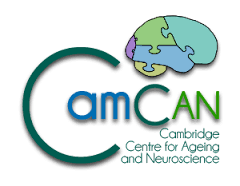CBSU bibliography search
To request a reprint of a CBSU publication, please
click here to send us an email (reprints may not be available for all publications)
When thoughts become action: an fMRI paradigm to study volitional brain activity in non-communicative brain injured patients.
Authors:
Boly, M., Coleman, M. R., DAVIS, M. H., HAMPSHIRE, A., BOR, D., Moonen, G., Maquet, P. A., Pickard, J.D., Laureys, S. & OWEN, A. M.
Reference:
Neuroimage, 36(3), 979-992
Year of publication:
2007
CBU number:
6487
Abstract:
The assessment of voluntary behavior in non-communicative brain injured patients is often challenging due to the existence of profound motor impairment. In the absence of a full understanding of the neural correlates of consciousness, even a normal activation in response to passive sensory stimulation cannot be considered as proof of the presence of awareness in these patients. In contrast, predicted activation in response to the instruction to perform a mental imagery task would provide evidence of voluntary task-dependent brain activity, and hence of consciousness, in noncommunicative patients. However, no data yet exists to indicate which imagery instructions would yield reliable single subject activation. The aim of the present study was to establish such a paradigm in healthy volunteers. Two exploratory experiments evaluated the reproducibility of individual brain activation elicited by four distinct mental imagery tasks. The two most robust mental imagery tasks were found to be spatial navigation and motor imagery. In a third experiment, where these two tasks were directly compared, differentiation of each task from one another and from rest periods was assessed blindly using a priori criteria and was correct for every volunteer. The spatial navigation and motor imagery tasks described here permit the identification of volitional brain activation at the single subject level, without a motor response. Volunteer as well as patient data (Owen et al., 2006) strongly suggest that this paradigm may provide a method for assessing the presence of volitional brain activity, and thus of consciousness, in non-communicative brain-injured patients.

 MRC Cognition and Brain Sciences Unit
MRC Cognition and Brain Sciences Unit

